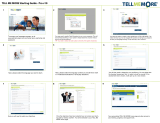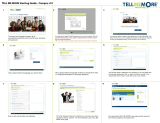
Table of contents
1 Getting started ............................................................................................................................................. 1
Important safety information ............................................................................................................................... 1
Product features and components ........................................................................................................................ 2
Features ............................................................................................................................................... 2
Front components ............................................................................................................................... 3
Rear components ................................................................................................................................ 4
Setting up the monitor .......................................................................................................................................... 5
Attaching the monitor stand ............................................................................................................... 5
Connecting the cables ......................................................................................................................... 6
Connecting USB devices ...................................................................................................................... 8
Adjusting the monitor ......................................................................................................................... 8
Turning on the monitor ....................................................................................................................... 9
HP watermark and image retention policy ......................................................................................... 9
Installing a security cable ................................................................................................................. 10
2 Using the monitor ........................................................................................................................................ 11
Software and utilities .......................................................................................................................................... 11
The Information le ............................................................................................................................................. 11
The Image Color Matching le ............................................................................................................................. 11
Using the OSD menu ............................................................................................................................................ 12
Using the function buttons .................................................................................................................................. 13
Reassigning the function buttons ....................................................................................................................... 13
Adjusting blue light output (select products only) .............................................................................................. 13
Using Auto-Sleep Mode ....................................................................................................................................... 14
3 Support and troubleshooting ........................................................................................................................ 15
Solving common issues ....................................................................................................................................... 15
Button lockouts ................................................................................................................................................... 16
Contacting support .............................................................................................................................................. 16
Preparing to call technical support ..................................................................................................................... 16
Locating the serial number and product number ............................................................................................... 16
4 Maintaining the monitor .............................................................................................................................. 17
Maintenance guidelines ....................................................................................................................................... 17
Cleaning the monitor ......................................................................................................................... 17
Shipping the monitor ......................................................................................................................... 18
v





















